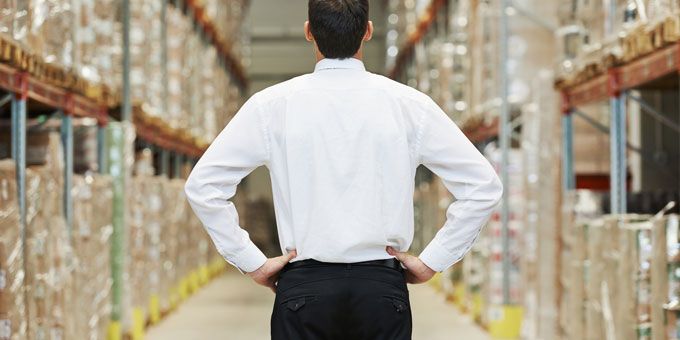As technology continues to evolve, so will keeping workers safe. Drones, virtual reality, automation and RFID sensors will take their place in the warehouses across the globe, keeping workers safe and improving efficiency and productivity.
 5 Ways Technology Improves Warehouse Safety
5 Ways Technology Improves Warehouse Safety

Megan Nichols | Schooled by Science
The warehouse and logistics industry has come a long way from its early days, and it continues to grow and change as new technology emerges. In 2017, there were 5.1 injuries recorded per 100 full-time warehouse workers, according to the Bureau of Labor Statistics. How does technology work to improve warehouse safety, and how can supervisors and managers adopt these new technologies to their benefit?
1. RFID Sensors for Proximity Warnings
Radio frequency identification or RFID sensors prove their worth in warehouse settings. In addition to becoming invaluable for inventory tracking and management, they can also help improve worker safety. RFID tags and sensors can generate proximity warnings if a worker strays too close to an unsafe area. This can prevent injuries and save lives, preventing distracted or focused employees from wandering into the path of a forklift or other heavy equipment.
Implementing this system is simple. Start by attaching an RFID reader to the equipment, and providing each employee with an RFID tag. If the reader detects a person is too close to the forklift, it can set off alarms, alert the driver or shut off the equipment.
2. Automation Assistance
Most warehouses haven't managed full automation as of 2019, but the potential is there and automating some tasks can help improve employee safety. Robots can perform tasks that are dangerous for human employees, increasing workplace safety. They can also carry out repetitive tasks, reducing the potential for repetitive strain injuries. Nearly 1.8 million warehouse workers every year suffer from ergonomic injuries, such as those caused by repetitive movement, working in awkward positions or working for too long without enough rest.
Automation will likely never replace the need for human employees, but it can help make the workplace safer so these workers can carry out their job without the risk of injury looming over their heads.
3. Forklift Safety
Automation may take the place of human forklift and pallet jack drivers as autonomous vehicle technology continues to evolve. This could reduce accidents between warehouse workers and forklifts, one of the most common causes of injury in this setting. For those that aren't ready to adopt self-driving forklift technology, a strict maintenance schedule can help keep the equipment in top working order, lowering the potential for catastrophic failure that could result in an accident, injury or fatality.
Take the time to inspect everything from the interior and exterior to every moving part. It might take extra time, but implementing a comprehensive maintenance and inspection schedule can save you time and money, and improve worker safety, in the long run.
4. Improved Training With VR and AR
Augmented and virtual reality, shortened to AR and VR respectively, are making an appearance in the warehouse and logistics industry — especially when it comes to training new employees and providing continuing education opportunities for existing ones. VR immerses the worker in a virtual environment, while AR takes virtual components and overlays them on the real world.
Both of these tools can be used for training, providing employees with the skills they'll need to complete their tasks safely, without putting the worker or the facility at risk while they learn. Implementing a VR or AR training program can constitute a significant investment due to the cost of equipment and training programs, but it can provide your employees with unique tools that will help keep them safe in the workplace.
5. Warehouse Drones
Drones were once toys and tools for hobbyists, but today they find a niche in nearly every industry. In the warehouse and logistics industry, drones can capture pallet barcodes and locations without the need for a human employee to scale a ladder to complete the job. Keeping employees off of ladders reduces their risk of a fall-related accident, especially if they have to move awkwardly to scan a barcode.
The technology hasn't advanced for drones and workers to move in tandem though. These drones only operate during uncrewed shifts. If the warehouse operates 24 hours a day, aisles where the drones work close to human foot traffic. These little robots complete the job 50% faster than a manual inspection while keeping human employees safe and on the ground.
The Future of Warehouse Safety
Warehouse safety is one of the most important parts of the storage and logistics industry. As technology continues to evolve, so will keeping workers safe. Drones, virtual reality, automation and RFID sensors will take their place in the warehouses across the globe, keeping workers safe and improving efficiency and productivity. This is just a small sampling of the new technologies that will continue to make warehouses safer for years to come.
The content & opinions in this article are the author’s and do not necessarily represent the views of ManufacturingTomorrow
Featured Product

